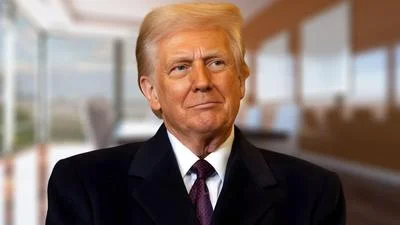The Congressional Record is a unique source of public documentation. It started in 1873, documenting nearly all the major and minor policies being discussed and debated.
“TRANSPORTATION COMMITTEE PROCEDURES FOR ISTEA REAUTHORIZATION” mentioning the U.S. Dept. of Transportation was published in the Extensions of Remarks section on pages E90 on Jan. 9, 1997.
The publication is reproduced in full below:
TRANSPORTATION COMMITTEE PROCEDURES FOR ISTEA REAUTHORIZATION
______
HON. THOMAS E. PETRI
of wisconsin
in the house of representatives
Thursday, January 9, 1997
Mr. PETRI. Mr. Speaker, on behalf of Nick Rahall, the ranking democratic member of the Subcommittee on Surface Transportation, Bud Shuster, the chairman of the Transportation and Infrastructure Committee, and James Oberstar, the committee's ranking democratic member, I would like to outline the subcommittee's procedure for identifying items of concern to members as it takes up the reauthorization of the Intermodal Surface Transportation Efficiency Act of 1991 [ISTEA]. This legislation authorizes over $150 billion for our nation's highway, transit, motor carrier, safety, and research programs for 6 years and is due to expire on September 30, 1997.
The importance of the surface transportation system cannot be overstated. There is ample evidence documenting the link between careful infrastructure investment and increases in this nation's productivity and economic prosperity. For instance, between 1980 and 1989, highway capital investments contributed almost 8 percent of annual productivity growth. A recent study demonstrated that the costs of highway investments are recouped through production cost savings to the economy after only 4 years. Another study concluded that transit saves at least $15 billion per year in congestion costs.
Despite the critical importance of our transportation systems to our Nation's economic health, investment has fallen short of what is needed. The Department of Transportation estimates that simply maintaining the current conditions on our highway, bridge, and transit systems will require investment of $57 billion per year from Federal, State, and local governments, an increase of 41 percent over current levels. To improve conditions to optimal levels would require doubling our current investment to $80 billion per year. Meeting these needs will require a variety of strategies, including better use of existing systems, application of advanced technology, innovative financing, and public-private partnerships. It is our goal to develop a bill that will meet these needs and maintain this world class system.
Reauthorization is the top priority of the Subcommittee on Surface Transportation. In the second session of the 104th Congress, the subcommittee held a series of 12 ISTEA oversight hearings and received testimony from 174 witnesses. The hearings gave many interested Members, the administration and affected groups the opportunity to testify and present their views. There was strong interest in these hearings and they covered the programs which need to be reauthorized in this coming bill. We would be happy to make copies of these hearing transcripts available to any interested Members.
We anticipate that the bipartisan legislation we develop this year will be based largely on the information obtained at last year's extensive programmatic hearings. As we begin this process, we would like to offer Members the opportunity to inform the subcommittee about any policy initiatives or issues that Members want the subcommittee to consider including or addressing in the reauthorization of ISTEA. Members having such specific policy requests should inform the subcommittee in writing no later than February 25, 1997.
Many Members have already contacted the subcommittee to inquire about, or to request, specific funding for critical transportation needs in their districts. With the convening of the new Congress, we anticipate that these requests will continue. Therefore, if you are intending to request funding for these projects, we will require that the request include the information set forth below. Although the subcommittee has not yet decided how such requests will be handled, the information provided will allow the subcommittee to thoroughly evaluate each request as we determine the appropriate action to take in this regard. Any requests should be submitted no later than February 25, 1997. Such submissions should be in writing and must include responses to each of the 14 evaluation criteria listed at the end of this statement.
We will also be holding a series of subcommittee hearings in late February and early March at which time Members and local officials will have an opportunity to testify on behalf of those requests. While these hearings are intended to give Members an opportunity to present information about specific project needs, it is not necessary for Members to testify.
We look forward to working with all Members of the House as we prepare this important legislation which will set the course for our Nation's surface transportation programs.
Transportation Project Evaluation Criteria, Committee on Transportation and Infrastructure, Subcommittee on Surface Transportation
1. Name and Congressional District of the primary Member of Congress sponsoring the project, as well as any other Members supporting the project (each project must have a single primary sponsoring Member).
2. Identify the State or other qualified recipient responsible for carrying out the project.
3. Is the project eligible for the use of Federal-aid funds
(if a road or bridge project, please note whether it is on the National Highway System)?
4. Describe the design, scope and objectives of the project and whether it is part of a larger system of projects. In doing so, identify the specific segment for which project funding is being sought including terminus points.
5. What is the total project cost and proposed source of funds (please identify the federal, state or local shares and the extent, if any, of private sector financing or the use of innovative financing) and of this amount, how much is being requested for the specific project segment described in item #4?
6. Of the amount requested, how much is expected to be obligated over each of the next 5 years?
7. What is the proposed schedule and status of work on the project?
8. Is the project included in the metropolitan and/or State transportation improvement plan(s), or the State long-range plan, and if so, is it scheduled for funding?
9. Is the project considered by State an/or regional transportation officials as critical to their needs? Please provide a letter of support from these officials, and if you cannot, explain why not.
10. Does the project have national or regional significance?
11. Has the proposed project encountered, or is it likely to encounter, any significant opposition or other obstacles based on environmental or other types of concerns?
12. Describe the economic, energy efficiency, environmental, congestion mitigation and safety benefits associated with completion of the project.
13. Has the project received funding through the State's federal aid highway apportionment, or in the case of a transit project, through Federal Transit Administration funding? If not, why not?
14. Is the authorization requested for the project an increase to an amount previously authorized or appropriated for it in federal statute (if so, please identify the statute, the amount provided, and the amount obligated to date), or would this be the first authorization for the project in federal statute? If the authorization requested is for a transit project, has it previously received appropriations and/or received a Letter of Intent or has FTA entered into a Full Funding Grant Agreement for the project?
____________________








